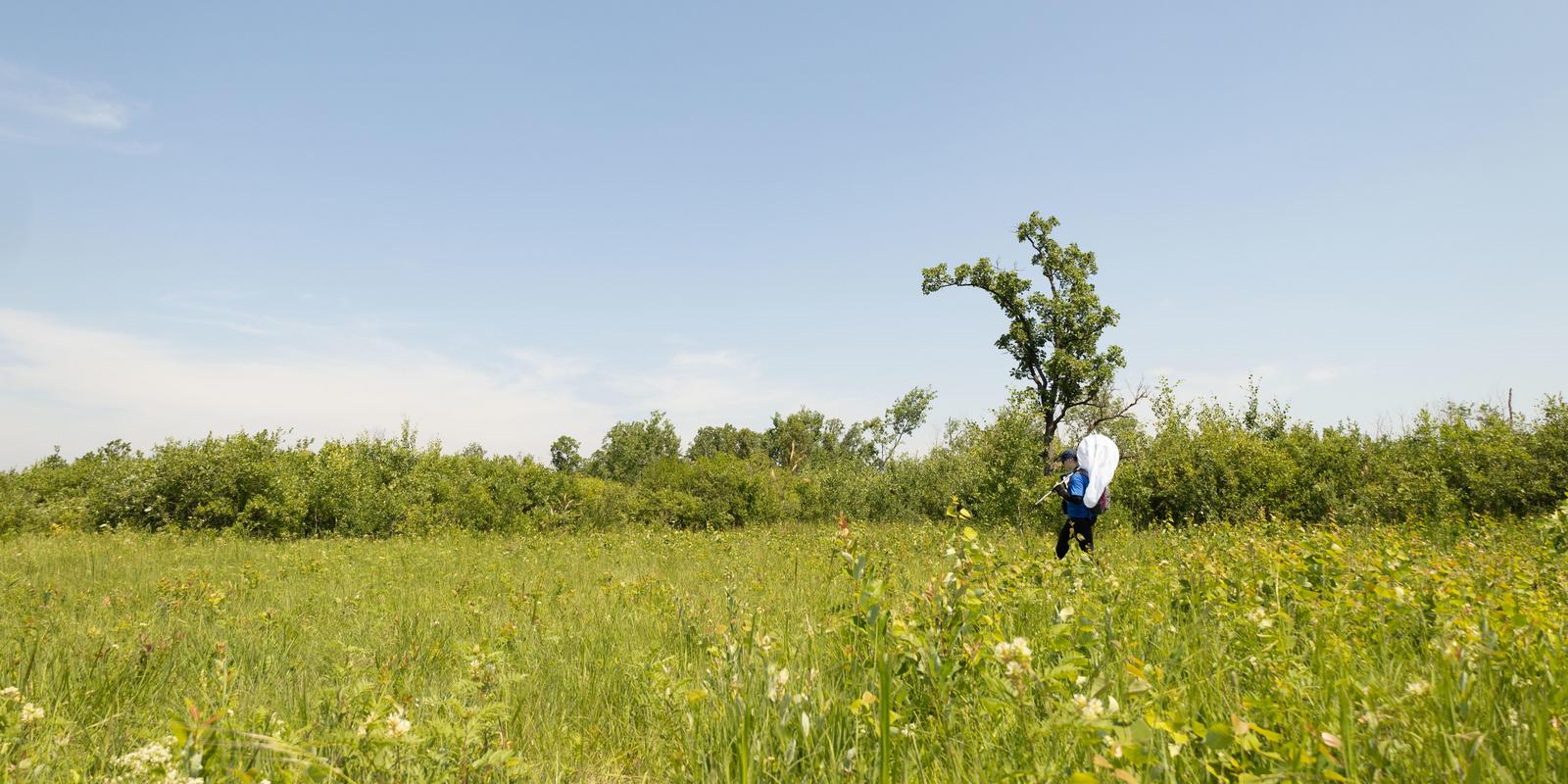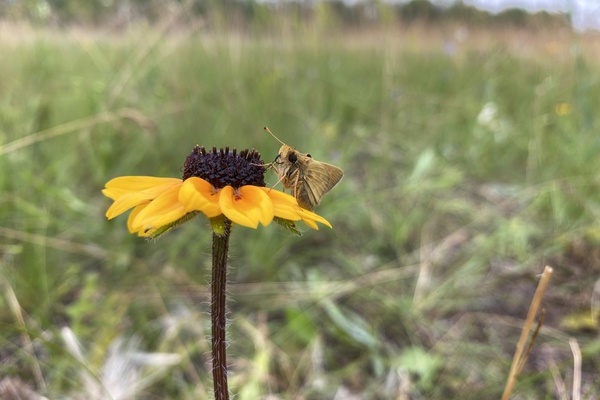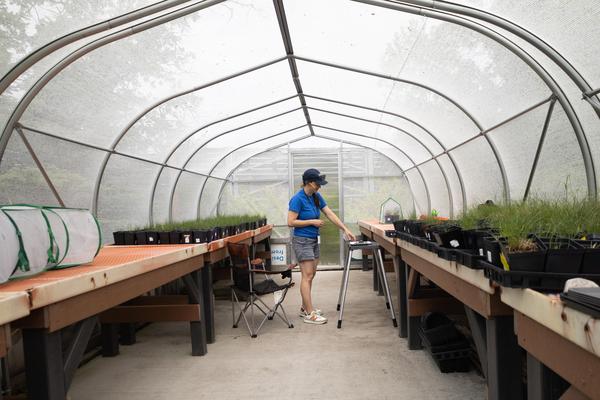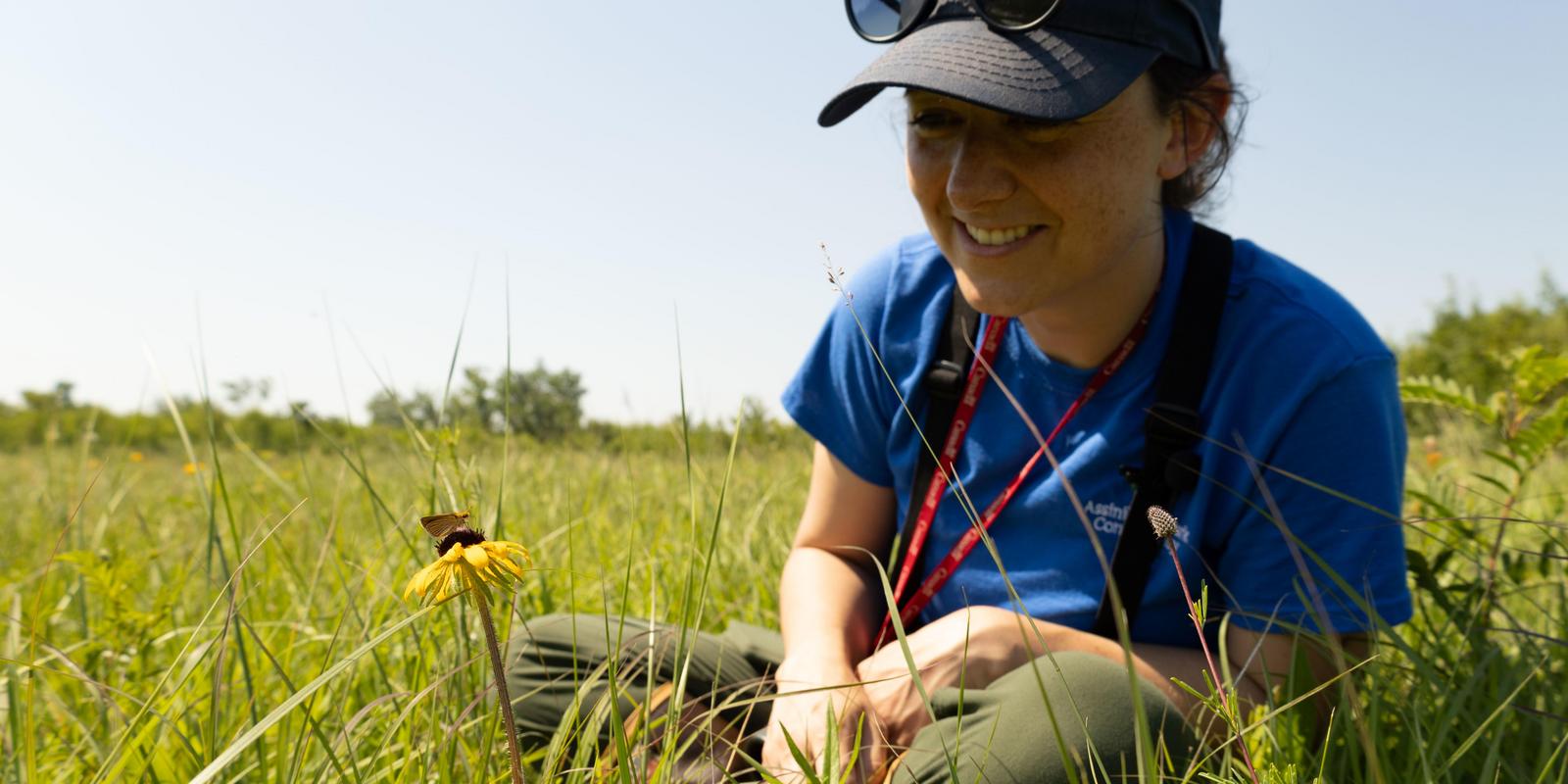Our Conservation and Research team completed another successful release of endangered prairie butterflies back into the wild here in Manitoba this summer!
This is the sixth consecutive year butterflies have been released and the first attempt to reintroduce the Poweshiek skipperling to a site where they once thrived.
58 critically endangered Poweshiek skipperling were released onto a new site in The Manitoba Tall Grass Prairie Preserve, managed by the Nature Conservancy of Canada.
“Year over year, we have been seeing more butterflies where we have done Poweshiek releases over the past five years. Based on those encouraging results, in consultation with our program partners, we made the decision to shift our releases to a new site this year,” said Laura Burns, Conservation Program Manager, Assiniboine Park Conservancy. “Poweshiek haven’t been observed there in nine years, but due to habitat management, it is an ideal location for the species, and we are optimistic about the opportunity to re-establish a population in this area. With the population currently limited to a few small, isolated areas, a re-established site will decrease the risk of losing this species in Canada due to extreme weather events and other threats.”

Tall Grass Praire Preserve
In addition, 19 endangered Dakota skippers — a closely related species — were released at a site in Manitoba’s Interlake region, bringing the total number of butterflies released this year to 77.
The Poweshiek skipperling and Dakota skipper have faced sharp declines in their populations since the 1990s and 2000s, and while the cause remains uncertain, we know that habitat loss, the use of pesticides, climate change, and extreme weather may be contributing factors.
Both delicate butterfly species rely on specific grassland ecosystems to survive and flourish. Sadly, prairie grasslands are among the most endangered and least protected terrestrial ecosystems on the planet, with over 80% already lost to land conversion. These habitats are crucial not only for the survival of at-risk butterfly species but also for other prairie endemic creatures like the burrowing owl and plains bison

Dakota skipper

Poweshiek skipperling
Local communities are often closest to the land and are some of the best advocates for conservation. For the first time, two residents of the RM of Stuartburn had the rare opportunity to participate in this year’s Poweshiek skipperling releases. Working with communities and engaging with people out on the landscape help raise awareness and connect people to nature, and to their local species and habitats. Interactions with Poweshiek skipperling are limited as the exact locations are not publicly released due to the sensitivity of the species. This gives these skippers their best chance to thrive.
The Grassland Butterfly Conservation Program is a remarkable collaboration between organizations in both Canada and the United States to understand why these butterflies continue to decline and prevent them from becoming extinct. Our Conservation and Research Team focuses on head-starting the Manitoba butterfly population by breeding and raising them through their most vulnerable life stages before releasing them back onto the landscape.

Butterflies are raised at the Zoo through their most vulnerable life stages

In the summer, the hoop house at the Zoo holds the caterpillars until they are butterflies
While this year's release numbers were slightly lower due to weather conditions during the breeding period, the results of recent population surveys are promising. The favourable weather conditions this year resulted in a successful breeding season, laying the groundwork for a larger release of adult butterflies next year after they spend the winter in human care at the Zoo.

Laura Burns releases a Poweshiek skipperling
The Conservation and Research team at Assiniboine Park Conservancy believes that together with our partners, like the Nature Conservancy of Canada, we can make a difference in the recovery and conservation of these incredible prairie skippers.
Learn more about our journey to protect and preserve these precious butterfly species here!
You may not have a prairie habitat where you live, but pollinating insects and rare habitats are everywhere. Protect natural habitat and support organizations who are working towards that goal. You can also create habitat for species at your home, school, work, and community by planting native species and reducing the use of pesticides.





